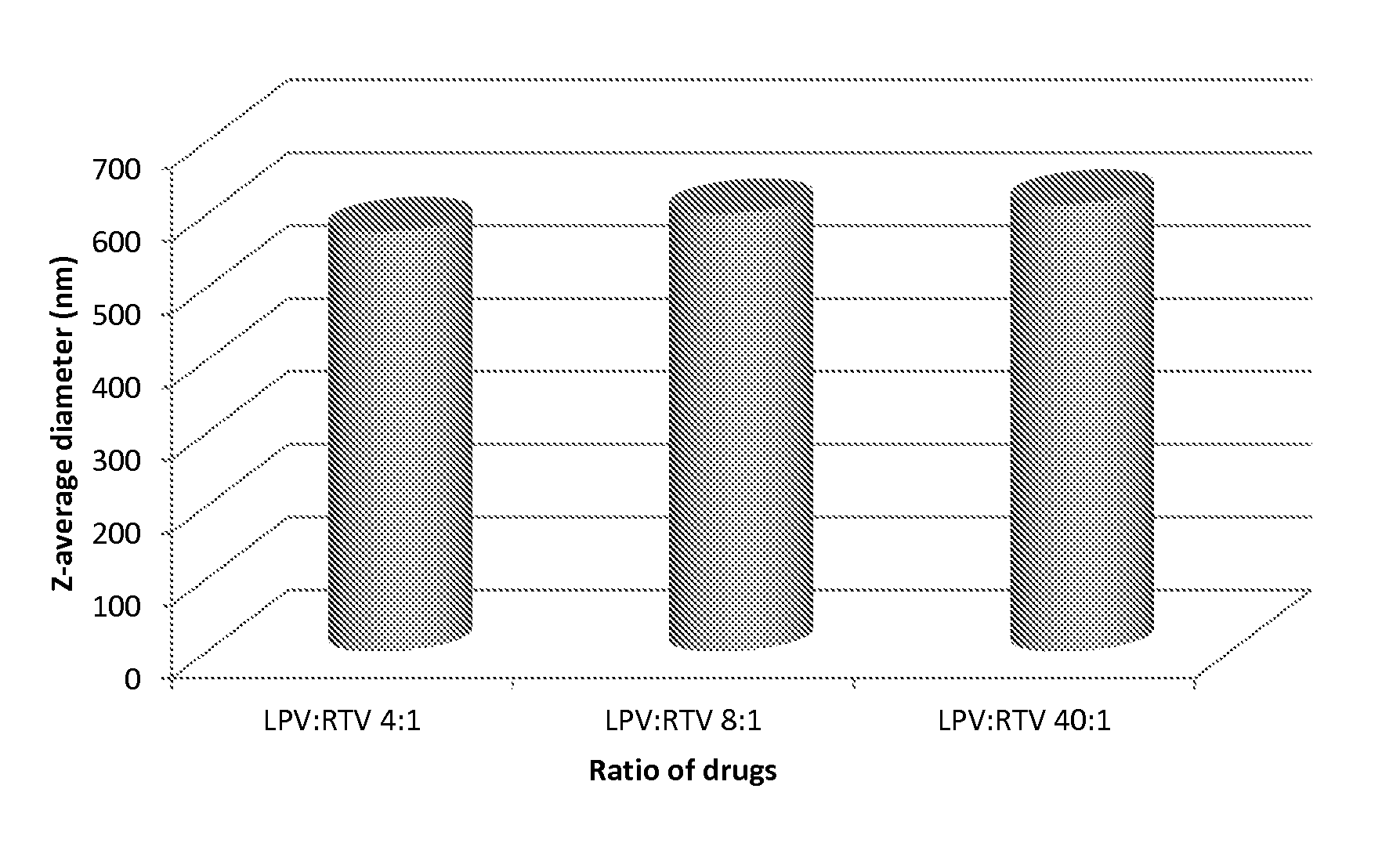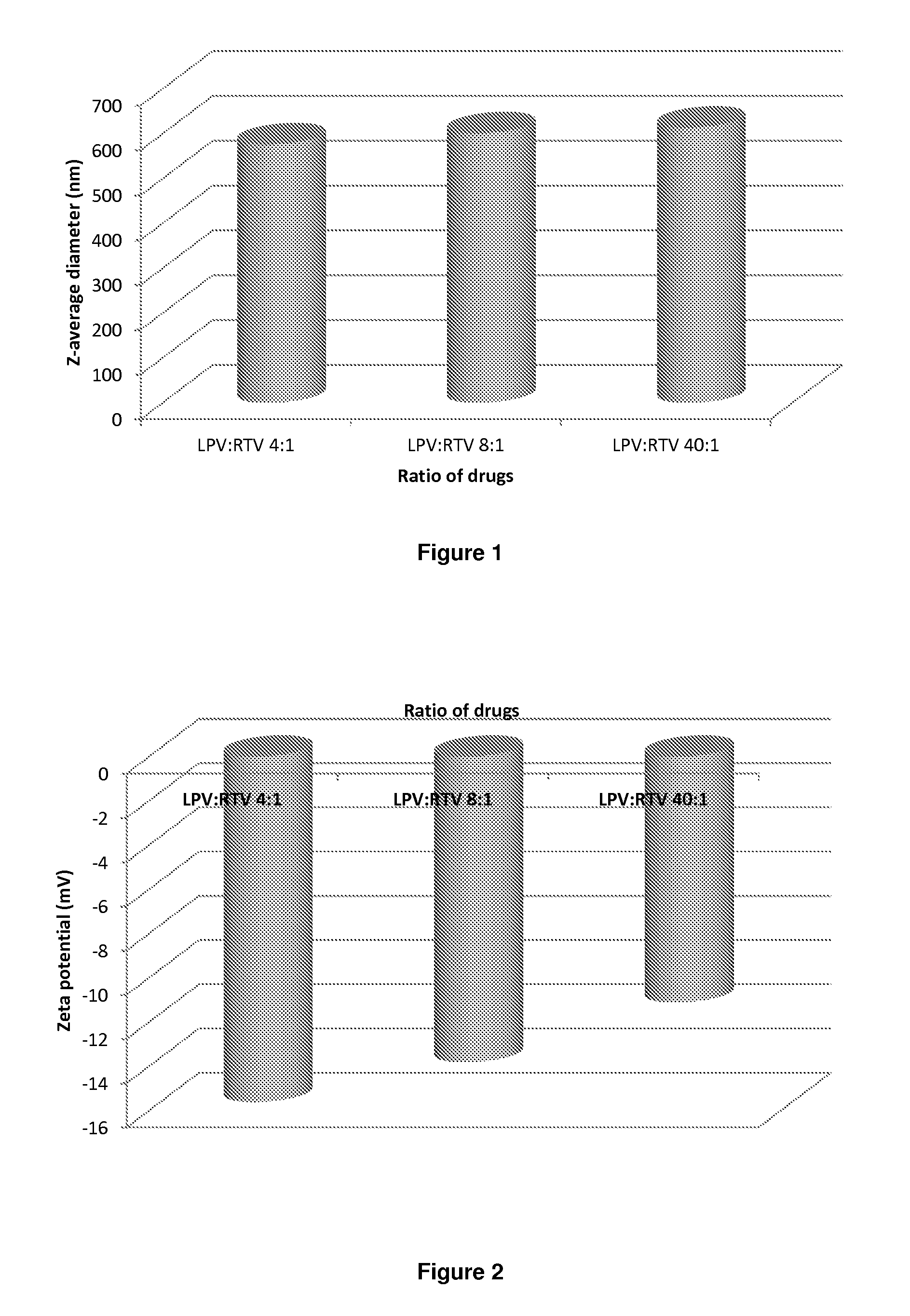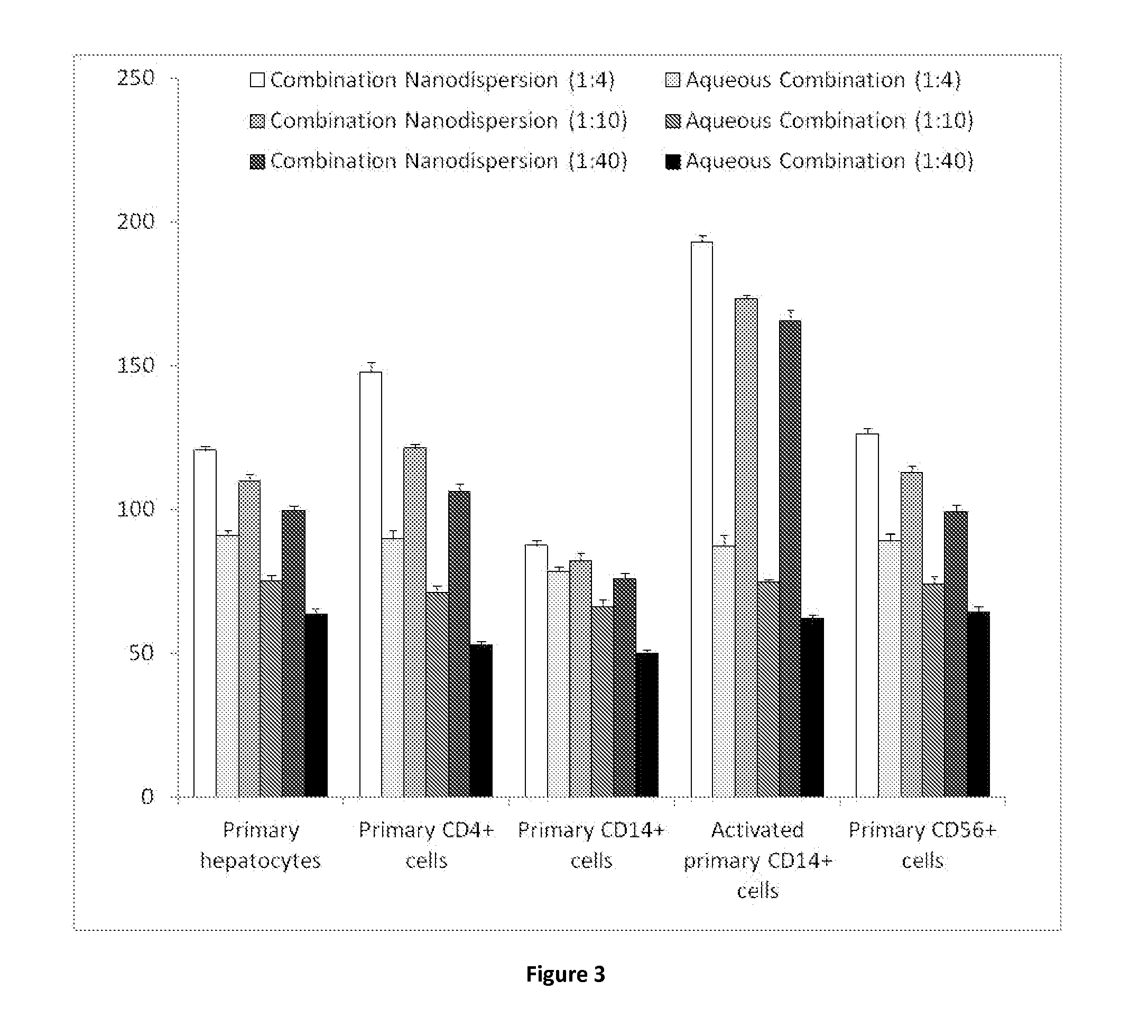Compositions of lopinavir and ritonavir
a technology of ritonavir and lopinavir, which is applied in the field of compositions of lopinavir and ritonavir, can solve the problems of variable penetration of ritonavir into cells, insufficient drug loading between patients and patients, and the major cause of morbidity and mortality of human immunodeficiency virus (hiv) in both the developed and the developing world. , to achieve the effect of high drug loading
- Summary
- Abstract
- Description
- Claims
- Application Information
AI Technical Summary
Benefits of technology
Problems solved by technology
Method used
Image
Examples
example 1
Synthesis of Lopinavir and Ritonavir Combination Particles
[0265]Samples are prepared using a 70 mgml−1 stock solution of lopinavir and ritonavir (A) in chloroform (at either 4:1, 8:1 or 40:1 mass ratios of LPV to ritonavir), a 22.5 mgml−1 of PVA (P) and a 22.5 mgml−1 stock solution of Vit-E-PEG-succinate (S). Stock solutions are added in the following proportion; 100 μl (A); 90 μl (P) 45 μl (S) and 265 μl of water, therefore solid mass ratio is; 70% (A), 20% (P) and 10% (S) in an 1:4 oil to water (O / W) mix. The mixtures are the emulsified using a Covaris S2x for 30 seconds with a duty cycle of 20, an intensity of 10 and 500 cycles / burst in frequency sweeping mode. After which, the samples were immediately cryogenically frozen. Three samples (where the LPV to RTV ratio was 4:1, 8:1 or 40:1) were prepared. Once all 3 samples had been prepared, they were lyophilised (Virtis benchtop K) for 42 hours to leave a dry porous product. The samples were then sealed in individual vials until an...
example 2
Synthesis of Radiolabelled Lopinavir and Ritonavir Combination Particles
[0268]Radiolabelled lopinavir and ritonavir samples were prepared in accordance with the method previously described in Example 1, however, the chloroform solution containing the lopinavir and ritonavir was also dosed with either radiolabelled lopinavir or ritonavir to give a tracer concentration of radioactivity for combination samples.
example 3
Screening for Nanoformulations of Ritonavir—10 Hydrophilic Polymers, 16 Surfactants
[0269]Samples are prepared using a 10 mgml−1 stock solution of ritonavir (A) in chloroform, a 22.5 mgml−1 of polymer (P) and a 22.5 mgml−1 stock solution of surfactant (S). Stock solutions are added in the following proportion; 100 μl (A); 267 μl (P) and 133 μl (S), therefore solid mass ratio is; 10% (A), 60% (P) and 30% (S) in an 1:4 oil to water (O / W) mix. The mixtures are then emulsified using a probe sonicator (UP400S manufactured by Hielscher (Germany)), fitted with an H3 titanium probe) operated at 20% amplitude for 7 seconds followed by immediate cryogenic freezing.
[0270]A matrix of 160 samples (comprised of 10 different polymers and 16 surfactants) was prepared. Once all 160 samples had been prepared, they were lyophilised (Virtis benchtop K) for 42 hours to leave a dry porous product, the samples were then sealed in individual vials until analysis.
[0271]The polymers and surfactants employed i...
PUM
| Property | Measurement | Unit |
|---|---|---|
| particle size | aaaaa | aaaaa |
| particle size | aaaaa | aaaaa |
| particle size | aaaaa | aaaaa |
Abstract
Description
Claims
Application Information
 Login to View More
Login to View More - R&D
- Intellectual Property
- Life Sciences
- Materials
- Tech Scout
- Unparalleled Data Quality
- Higher Quality Content
- 60% Fewer Hallucinations
Browse by: Latest US Patents, China's latest patents, Technical Efficacy Thesaurus, Application Domain, Technology Topic, Popular Technical Reports.
© 2025 PatSnap. All rights reserved.Legal|Privacy policy|Modern Slavery Act Transparency Statement|Sitemap|About US| Contact US: help@patsnap.com



